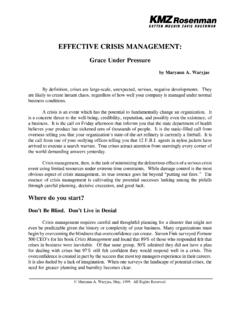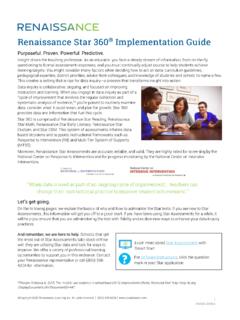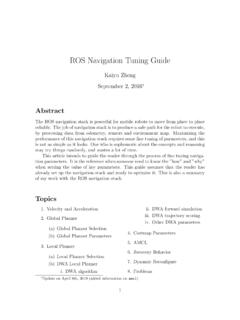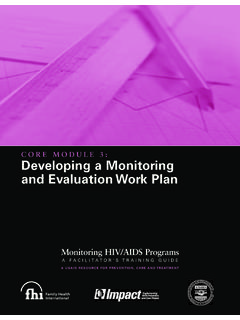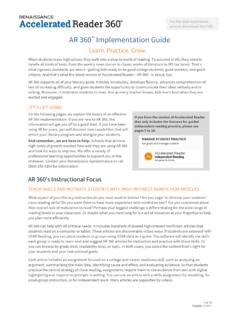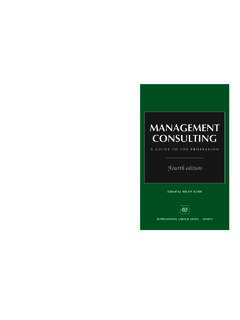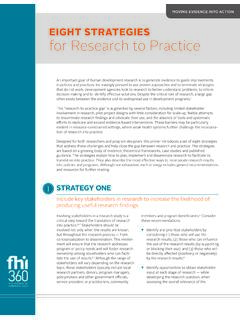Transcription of Compliance Audits and Reviews: A Step-by-Step Guide
1 Compliance Audits and Reviews: A Step-by-Step Guide Prepared By: Ethan E. Rii, Esq. Partner Katten Muchin Rosenman LLP What benefits exist in implementing a robust and active Compliance program? Competitive advantages Establish reputational advantages Address auditor concerns Avoids fear that can chill creativity Reduces likelihood of legal violations Avoids Compliance hurdles to transactions May reduce penalties/avoid CIA in the event of a Government investigation Minimizes institutional risk and avoids adverse PR 1 The Perfect Compliance Plan 2 The 7 Pillars of an Effective Compliance Plan The OIG provides seven basic elements of an effective Compliance program that pertain to all industries (many of which have been incorporated into the 12-steps): written policies, procedures and standards of conduct; a Compliance officer and Compliance committee; effective training and education.
2 Effective lines of communication; standards through well-publicized disciplinary guidelines; internal monitoring and auditing; and promptly to detected offenses and developing corrective action. The OIG also provide industry-specific guidance ( , Nursing Facilities, Research, Hospitals, Pharmaceutical Manufacturers, Ambulance Suppliers, Individual and Small Group Physician Practices) 3 Step 1 Know Your Scope What statutes, regulations, policies and organizational activities are relevant? Understand the scope of the areas of Compliance that are critical to your specific industry Understand the non-negotiables Proper management of expectations at all levels Top-down approach (versus bottom-up) 4 Step 2 Understand the Challenges in Establishing an Effective Compliance Program 5 Typical Challenges to Consider Limited resources (legal, financial, manpower) Ineffective and infrequent Compliance education Embedding Compliance within the business culture Getting the business leaders to own Compliance Tone at the middle/manager buy-in (soft spot) Inadequate commitment to auditing/internal reviews Lack of clear communications channels 6 Step 3 Know where the Pitfalls are.
3 7 Typical Compliance Pitfalls Policies too complicated and theoretical Lack of policies in relevant and applicable risk areas ( , non-monetary compensation; response to government inquiries; bundled contracts) Inadequate internal controls to ensure policies are followed Early involvement of Legal/ Compliance when issues or need for guidance arises Failure to involve the business in Compliance policy development, implementation and education 8 9 Ongoing Legal Changes CMS and Stark Compliance (Strict Liability) OIG and Fraud/Abuse (Intent Based) Coding Compliance (High Risk Areas) Reimbursement and Billing (High Bar) Ramp-up in reinforcement for HIPAA breaches Ongoing, periodic changes are the norm in our industry (Ongoing Education in Key)
4 9 Board and Management Responsibilities The Board and senior management have responsibility to oversee Compliance programs and can be held accountable for violations when there is substandard oversight or there is a culture of noncompliance within the business. United States v. Park, 421 658, 672-74 (1975) (a board member or senior management may be held liable for violations for failing to act if he was in a position of authority to do so). The OIG is focused on holding Responsible Corporate Officials accountable for health care fraud ( , exclusion of a chairman of a large nursing home for his responsibility in alleged substandard care of residents) Must exercise reasonable oversight with respect to implementation and effectiveness of Compliance program.
5 May delegate oversight of Compliance program, but remains accountable for reviewing its status. Training and education on Compliance program required. Should have a means to prove active engagement in the oversight of the program. 10 Step 4 Compliance Review Roadmap 11 Typical Process for Compliance Review Step 1 The Kickoff Initial teleconference/meeting to define project scope, objectives and content/timing of deliverables Step 2 Disseminate Duties and Deadlines Issue work plan and information request Step 3 Review Underlying Compliance Framework Review Compliance plan, policies and other documents provided in response to information request Step 4 The CSI Part Conduct focus group interviews of key client Compliance and Legal representatives and leadership Step 5 Pen to Paper Deliver draft report identifying gaps from regulatory/ best practice standards and recommendations to fill gaps Step 6 The Download Vet preliminary report with Compliance and Legal.
6 Step 7 The Clean-Up Revise report and draft executive summary Step 8 The Pitch Present findings and recommendations to Board or Audit Committee 12 Deeper Dive Elements of an Effective Compliance Plan Written standards of conduct, policies and procedures that promote the health system s commitment to Compliance Designation of a Compliance Officer and other appropriate Compliance infrastructure Training and education Effective lines of communication Auditing and monitoring Enforcement of disciplinary standards through well publicized guidelines Prompt and appropriate response to suspected non- Compliance 13 Deeper Dive Written Standards of Conduct, Policies and Procedures Document Compliance expectations Aligned with regulatory guidance Code of Conduct Compliance program documents Up-to-date policies and procedures addressing risk areas Proof of distribution to employees and First Tier, Downstream and Related Entities (FDRs)
7 Employee/contractor certifications/acknowledgements Vendor credentialing and certifications Policy or statement of non-intimidation and non-retaliation Establish schedule for and track periodic updates 14 Deeper Dive Gap Review 15 Need for Compliance Gap Analysis 16 Health care reforms create new Compliance risks for health care providers and life science companies Statutory changes provide new tools and additional resources to investigate and prosecute health care fraud & abuse, while making violations easier to prove Increased focus on physician relationships Advent of RAC, HEAT and other audit and enforcement initiatives State and Federal False Claims Billing, Coding and Documentation Anti-Kickback Statute Safe Harbors Stark Law Licensing and Medicare/Medicaid Requirements Tax Exemption Considerations Know Your Business Where are the Usual Knowledge Gaps?
8 17 Where are the Usual Process Gaps? 18 Compliance program infrastructure Channels for communicating Compliance issues and seeking guidance Compliance education Auditing/monitoring function Billing/coding function coding Licensing requirements Gap Analysis Tips Identify and prioritize recommendations for implementation Develop work plan to effectuate recommendations Solicit leadership team input on recommendations and work plan Implement work plan, including policy, protocol, and process revisions to improve Compliance plan effectiveness Educate workforce on Compliance program changes 19 What happens next? 20 Step 5 The Playbook How to Implement Changes 21 Key Recommendations 22 Establish revamped communication protocols and policies (for , if there are significant billing and coding issues, implement clear processes for addressing ambiguities as to particular codes) Upgrade policies, tools and educational programs on weakness areas ( , if physician transactions are problematic, target educational on such areas) Require business ownership of all policies ( , require business leaders to take part in presenting policies and educational efforts, consider more interactive solutions)
9 Develop internal controls to guard against violation of scope of practice and scope of authority parameters ( , consider where the gaps are and figure out how best to address directly and indirectly) Sometimes outside resources are necessary ( , utilize contract tracking mechanisms) Additional Key Recommendations Institute a rapid response protocol to address Government inquiries (even if not immediately, become a prepper for such events) Formalize a process to make Compliance a part of the annual review process ( , incorporate Compliance in the employee review process as well as part of 360 review) Create more effective channels of communication to assure awareness of Compliance policy changes, legal developments and potential Compliance issues ( , intranet, web-based tools, etc.)
10 Implement an ongoing Compliance management plan and investigation protocols to address risk areas Shift from retrospective to concurrent auditing in known risk areas 23 Oversight/ Appropriate Compliance Infrastructure Recommendations Enhance Compliance Committee charters, agendas and minutes Updates to CEO/Executive Team on program status and issues Periodic Board updates, agendas and minutes Ability for Compliance Officer to make in-person reports to CEO, Executive Team, GC Office and/or Board Separate counsel from Compliance OIG comment - Does the Compliance officer have independent authority to retain legal counsel? This question suggests that in-house counsel may not be well suited to serve the advising needs of the organization s Compliance officer, and that having the option to seek outside counsel on Compliance issues may better preserve the officer s independence.

